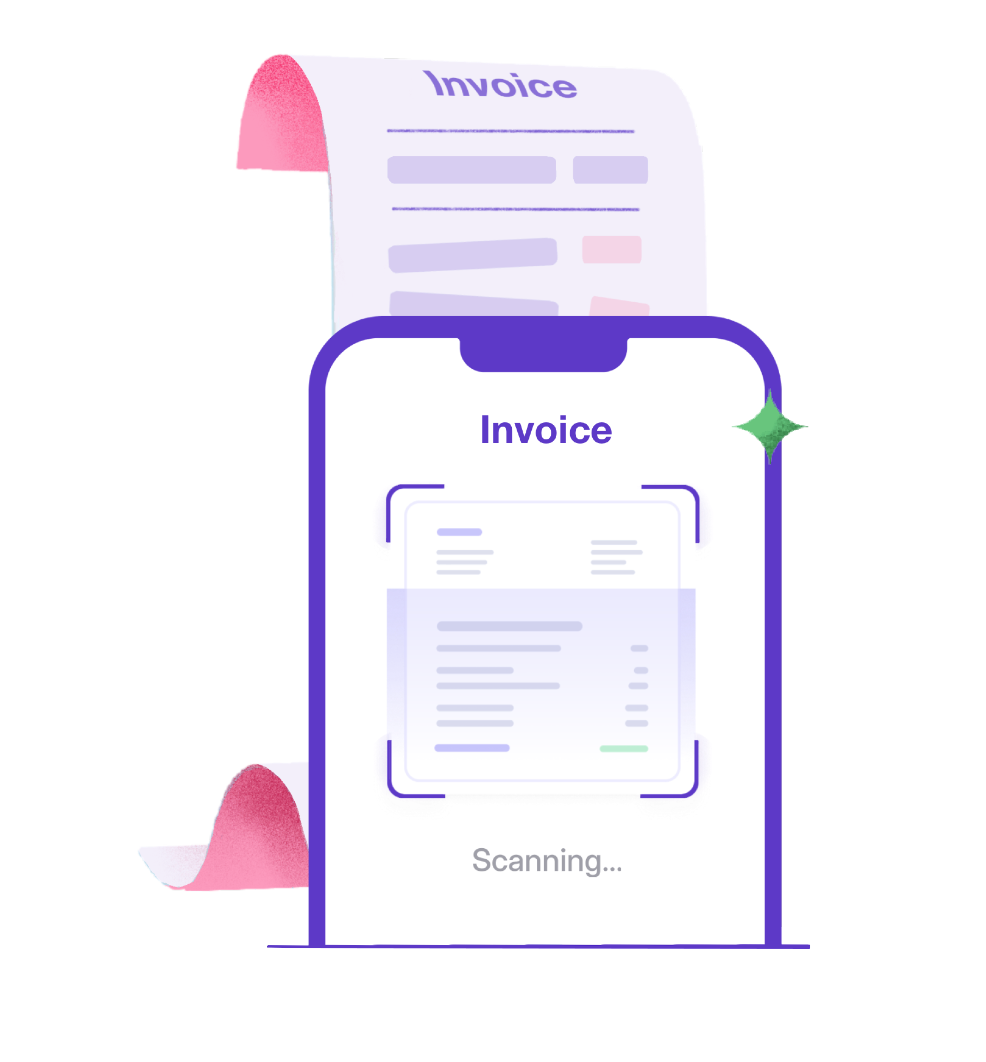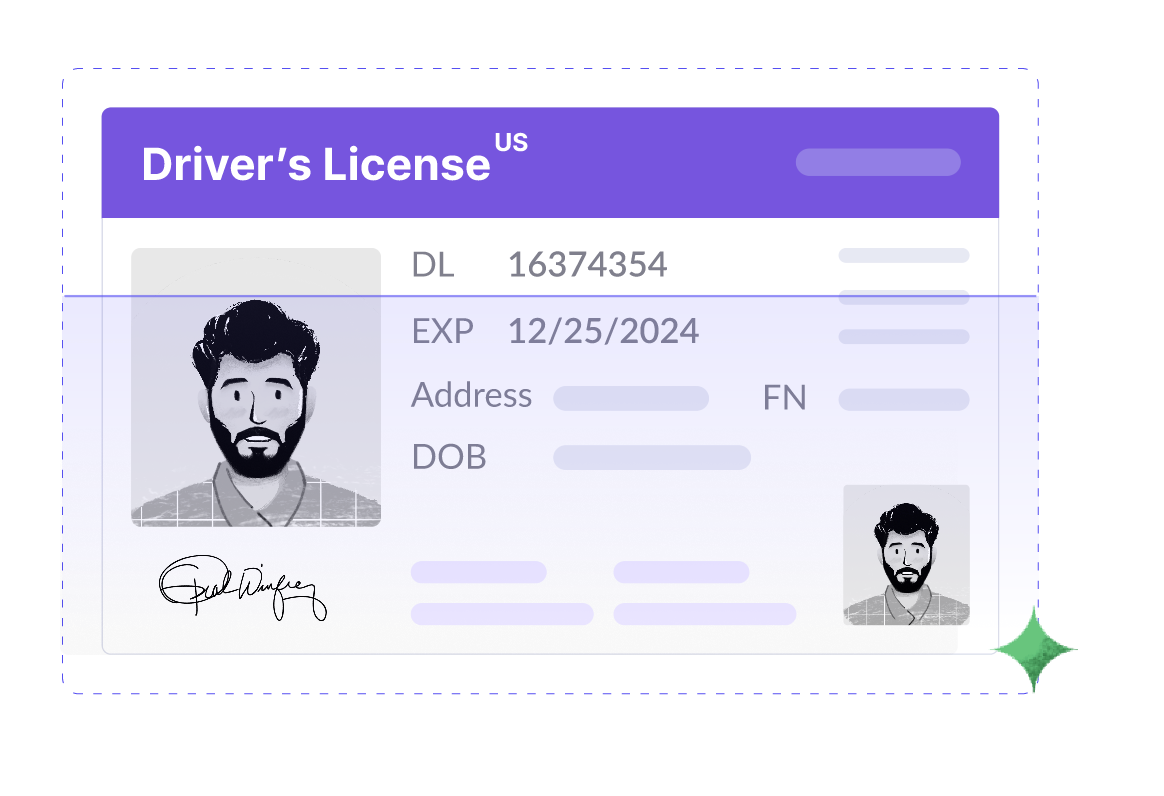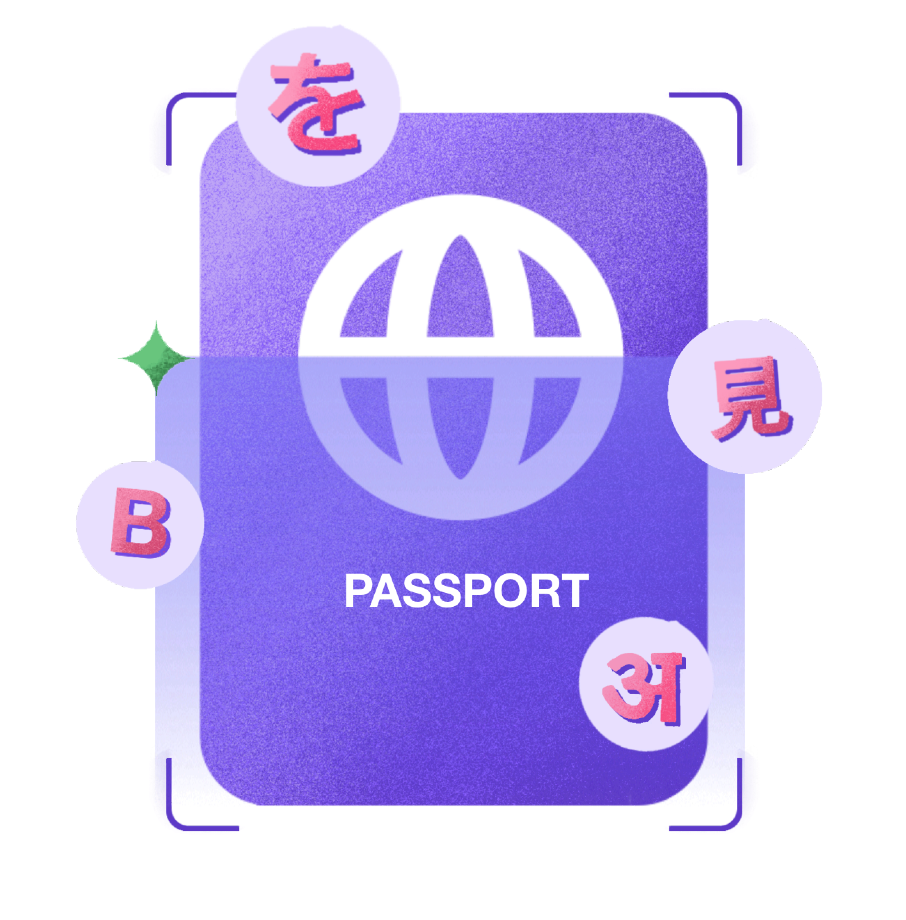The need for precise and accurate data extracted from documents underscores the importance of OCR in today’s increasingly digitized world.
OCR systems have now become an essential tool in various industries. Especially in the field of identity verification. This blog will delve into the world of OCR technology, its types, use cases, and how it is transforming the identity verification process.
What is OCR Technology?
OCR stands for Optical Character Recognition. OCR technology enables machines to read and extract data from scanned documents, image files, or handwritten text. OCR technologies work by converting the characters into digital codes that can be processed by computers. This eliminates the need for manual data entry, making it faster and more accurate.
Related: OCR vs ICR: What’s the Difference?
The Importance of Optical Character Recognition Technology
In an increasingly dependent digital world, the importance of OCR technologies cannot be overstated. From banking and healthcare to finance and insurance, businesses are leveraging OCR to streamline their operations and enhance user experience.
Notably in the realm of identity verification, OCR acts as a linchpin, automating the extraction and processing of personal information from paper documents like passports, driver’s licenses, and ID OCR cards. This not only accelerates the verification process but also bolsters security, minimizing opportunities for human error or fraud, and ensuring only authenticated individuals gain access to services.
How Optical Character Recognition Works?
OCR technology follows a complex process to accurately and efficiently extract data from scanned documents. Here are the general steps used by an OCR software:
Image Acquisition/Analysis
Image acquisition is the first step in the OCR process. It involves capturing or scanning the document that contains the text using a camera, scanner, or smartphone. Once the image is obtained, it undergoes analysis to detect and correct any possible distortions.
Pre-Processing
The pre-processing stage entails several steps such as noise reduction, skew correction, and binarization. These steps aim to improve the quality of the image file captured and prepare it for character recognition.
Segmenting
In this stage, the image is divided into sections to identify individual characters and words. This step is crucial as it enables OCR software to accurately identify and extract text from the document.
Character/Text Recognition
In this stage, the OCR system uses Artificial Intelligence (AI) algorithms to recognize characters and convert them into digital text. Two common methods used in character recognition are pattern recognition and feature recognition. Pattern matching involves comparing the shapes of individual characters in the scanned image with a pre-defined database, while feature recognition looks for specific features within each character.
Post-Processing
After the characters are recognized, they undergo post-processing where spelling and grammar checks are performed to ensure the accuracy of the extracted text. This step also involves formatting the text to match the original document.
What Are the Types of OCR Technology?
Now that we’ve discussed the process of OCR technology, let’s move on to explore the various types of OCR systems. Each type has distinct capabilities and uses, depending on the complexity of the task at hand.
Optical Character Recognition (OCR)
Optical Character Recognition (OCR) is the most commonly used type of OCR technology. With its ability to scan printed paper documents and convert the scanned document into editable and searchable data, it streamlines tasks such as data entry and digitization of documents. However, its effectiveness can vary based on the quality of the original document and the complexity of its layout.
Optical Word Recognition (OWR)
Optical Word Recognition (OWR) is a more advanced version of OCR technology that can recognize entire words instead of just characters, making it particularly useful for tasks like unscrambling words from handwritten or printed documents and processing large volumes of data quickly. However, it may struggle with unique fonts or handwriting styles.
Optical Mark Recognition (OMR)
Optical Mark Recognition (OMR) is a specialized type of OCR tech that is designed to recognize specific marks or symbols on a document. It is commonly used in surveys or exams where multiple-choice answers are marked with a pencil or pen. OMR systems can quickly and accurately extract data from these types of documents, making them ideal for tasks such as vote tabulation.
Intelligent Character Recognition (ICR)
Intelligent Character Recognition (ICR) is the most advanced type of optical character recognition technology. It can read and interpret complex handwritten text, making it useful for tasks such as processing handwritten forms or checks. ICR systems use artificial intelligence and machine learning algorithms to continuously improve their accuracy and speed.
What Are the Applications of OCR?
As we delve deeper into the functionalities of OCR technology, its widespread applications become apparent. Let’s examine how these technologies are shaping various industries, simplifying tasks, and enhancing efficiency.

- Document Management: OCR technology simplifies the process of data retrieval and document digitization, enabling easy search and editing of scanned text. It reduces manual data entry and enhances document management efficiency.
- Healthcare: In the healthcare industry, OCR aids in digitizing patient records, enabling easy access and management of health data.
- Banking and Finance: OCR facilitates check digitization and data extraction from financial documents like bank statements, loan applications, and tax forms, improving processing speed and reducing errors.
- Education: Educational institutions utilize OCR to digitize books and other materials, promoting accessibility and remote learning.
- Retail: In the retail sector, OCR streamlines invoice processing and inventory management by automating the extraction of data from paper documents.
- Legal: Law firms harness OCR technology to digitize and search through large volumes of legal documents, enhancing efficiency and productivity.
How Is OCR Software Used in Identity Verification?

Identity verification, often referred to as IDV, is a crucial process utilized in various sectors to confirm the authenticity of an individual’s identity. The process typically involves comparing a user-provided identity against one or more reliable sources of data to determine a match. The importance of IDV cannot be overstated as it serves as the first line of defense against fraud and identity theft.
In today’s digital age, where remote transactions are ubiquitous, the value of efficient and reliable IDV processes has grown exponentially. A robust IDV process not only deters fraudulent activities but also fosters trust between businesses and their customers. This trust is vital to building long-term customer relationships and ensuring smooth, secure transactions. As such, businesses across industries are increasingly leveraging advanced technologies like OCR for swift and accurate identity verification.
IDV Use Cases with OCR Technology
- Online Government ID Verification: OCR technology is employed in online platforms to validate government-issued IDs. This digital system allows for immediate and precise extraction of data, ensuring the authenticity of the ID and the individual in question. Also read about how OCR technology is enhancing other document processing tasks in our blog on legal OCR software.
- Document Verification: OCR is utilized to speed up the document verification process. In the case of passports, OCR scans and extracts data from passports or driver’s licenses using machine-readable text, minimizing manual input and reducing the risk of errors.
Read more: What is machine readable zone and how does it work?

- Driving License Verification: For companies in the vehicle rental and ride-sharing industries, OCR enables swift and accurate verification of driving licenses, enhancing customer experience and safety.
- Banking and Financial Services: Banks and financial institutions use OCR tools for verifying customer identities during account opening procedures, ensuring compliance with KYC (Know Your Customer) regulations, and preventing fraudulent activities.
- Healthcare: In healthcare, OCR software assists in verifying patient identities, reducing the risk of medical errors and fraud, and ensuring the right treatment is given to the right patient.
- Online Retail: E-commerce platforms leverage OCR technology for identity verification during customer registration and checkout processes, contributing to secure and smooth online shopping experiences.
- Telecommunications: Telecommunication providers use OCR software for verifying the identity of individuals when issuing SIM cards, ensuring adherence to regulatory compliance and preventing misuse of services.
What Are the Benefits of OCR in Identity Verification?
OCR technology offers several benefits in the realm of identity verification, including:
- Increased Accuracy and Efficiency: OCR technology optimizes data extraction and processing of a machine readable text documents, reducing the time spent on manual data entry. This increase in speed and precision enhances operational efficiency and productivity.
- Reduction of Manual Errors: Manual entry is prone to human error. The use of OCR greatly reduces these errors by automating the extraction and processing of data from identity documents, thereby improving the reliability of the verification process.
- Compliance with Regulations: OCR technology assists businesses in complying with regulatory standards such as KYC and AML. By automating identity verification, organizations can ensure that they are consistently meeting compliance requirements.
- Enhanced Customer Experience: The automation of identity verification speeds up processes such as account creation and transaction approval, leading to a smoother, more efficient customer experience.
- Fraud Prevention: By accurately verifying the identity of individuals, OCR technology aids in the detection and prevention of fraudulent activities. This is especially important in industries such as banking, financial services, and e-commerce, where identity fraud can have significant consequences.
Read more about fraud detection and prevention.
- Cost-effective: By automating a task that would otherwise require manual labor, OCR technology can lead to significant cost savings for businesses in the long run. This is especially beneficial for smaller organizations that may not have the resources to manually verify identities.
Success Story: HomeCredit, an international consumer finance provider was initially using manual verification processes that were time-consuming, error-prone, and costly. This made it difficult to scale their operations and meet the increasing demand for their services. By implementing HyperVerge’s OCR technology, HomeCredit was able to automate identity verification and reduce its error rate by 50%. This resulted in a more efficient and cost-effective process, leading to increased customer satisfaction and business growth.
What Are the Challenges and Considerations Associated With OCR Technology?
OCR technology, serving as an effective tool for identity verification, offers numerous advantages like improved data reliability, regulatory compliance, enhanced customer experience, fraud prevention, cost-effectiveness, and easy integration. However, deploying OCR is not without its challenges and considerations, which are crucial for organizations to understand for successful implementation. These could encompass aspects such as accuracy, adaptability to new formats, and the ability to manage varying qualities of input documents. Understanding these complexities is imperative for organizations to harness the full potential of OCR technology.
What Are the Future Trends in OCR Technology?
OCR technology is set to be influenced significantly by emerging technologies and trends. OCR automation will lead to more efficient and faster identity verification processes, reducing the time taken for manual data entry and improving accuracy.
Artificial Intelligence (AI) is expected to play a pivotal role in the advancement of OCR technology, particularly through machine learning algorithms that can improve the system’s adaptability to new formats and its ability to handle varying qualities of input documents.
Looking ahead, the future of OCR technology is predicted to entail advancements in real-time OCR and mobile OCR, coupled with AI’s ability to understand and interpret complex text formats, further driving the evolution of this technology. The evolution of OCR technology has paved the way for the future with Intelligent Document Processing (IDP) which combines advanced machine learning and automation to revolutionize document analysis and information extraction.
Related read: What is the difference between Intelligent Document Processing vs Document Processing?
How to Choose the Best OCR Solution?
OCR technology is a powerful tool for identity verification, enhancing data reliability, regulatory compliance, and user experience. Future trends, influenced by AI and automation, promise improved adaptability and efficiency. Crucially, understanding OCR’s complexities is key to leveraging its full potential, making it a valuable asset for organizations.
Having a holistic and customizable identity verification solution is beneficial for several reasons. It allows organizations to adapt to various user needs and business requirements, ensuring optimal security and compliance. The flexibility of customization enables a seamless user experience, while a holistic approach ensures comprehensive protection. This approach accounts for all potential threats and vulnerabilities, providing a robust defense against identity theft and fraud.
Read more: A buyer’s guide to choosing the best OCR software
Conclusion
In the digital age, OCR technology proves to be a game-changer, particularly in the field of identity verification. It optimizes the process by enhancing accuracy, reducing manual intervention, and ensuring regulatory compliance.
Among potential solutions, HyperVerge’s AI-powered OCR software stands out due to its extensive learning capabilities, adaptability to various text formats, and the provision of a seamless user experience.
Developed over 13 years, our AI model leverages extensive learning and adaptation to various text formats, enhancing its accuracy and reliability.
Sign up today and move forward with a reliable and efficient identity verification solution. Is there a better time than now to upgrade your identity verification process?






















